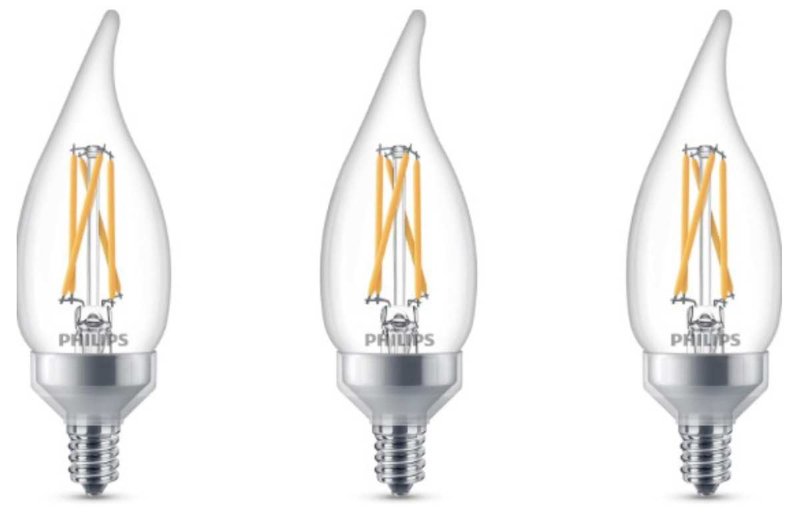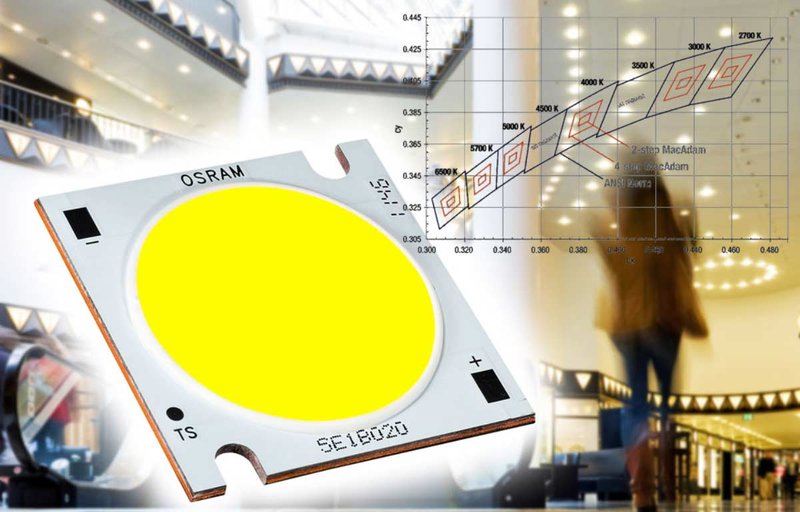
LED Lumens vs. Halogen Lumens: A Comparison for Light Bulbs and Chip-on-Board LED Modules
Published by Scott Oldner on Nov. 7, 2025, 10 a.m.
In the world of lighting, lumens are the key metric for measuring brightness—the total amount of visible light emitted by a source. Unlike watts, which measure energy consumption, lumens tell you how much light you're getting in all directions. This distinction is crucial when comparing technologies like LED (Light Emitting Diode) and halogen bulbs, as well as advanced LED technology such as Chip-on-Board (COB) modules. LEDs have not revolutionized lighting design but have made a massive reduction in energy consumption of those designs with their efficiency, while halogens remain a staple for their warm glow and affordability. In this article, we'll illuminate the differences in lumen output, efficiency, and applications for standard light bulbs and COB LED modules.
Understanding LED and Halogen Technologies
Halogen bulbs are an enhanced version of traditional incandescent lights. They use a tungsten filament heated by electricity, with halogen gas inside the bulb to extend filament life and improve efficiency slightly over basic incandescent sources. However, much of their energy is wasted as heat—only about 10-20% converts to light. LEDs, on the other hand, work via semiconductors that emit light when current passes through them. This process is far more efficient, with 80-90% of energy turning into light and minimal heat production. COB (chip on board) LEDs take this further by mounting multiple LED chips directly onto a single substrate, creating a dense, high-output light source that mimics a single panel of light rather than individual points. These differences in design lead to stark contrasts in performance, particularly in lumens per watt (lm/W), which measures how efficacious the bulb is. Efficacy is the term used when the input units and output units are different such as Lumens per Watt.
Lumen Output and Efficiency in Light Bulbs
When comparing standard LED and halogen bulbs, the focus is on how many lumens you get for the power consumed. Halogen bulbs typically deliver 15-25 lm/W. For example, a 60W halogen bulb might produce around 800-900 lumens, making it suitable for general household lighting but inefficient due to high energy use and heat. LED bulbs, by contrast, achieve 75-110 lm/W or more, often 80-100 lm/W in consumer models. An LED equivalent to that 60W halogen might use just 8-13W to output the same 800 lumens, saving over 85% on energy. This efficiency translates to lower electricity bills and reduced air conditioning when cooling the space. To illustrate, here's a comparison table based on common equivalents:

Lumens - Halogen Wattage - LED Wattage - Efficiency Gain
450 - 29W - 8W - Up to 72% less power
800 - 43W - 13W - Up to 70% less power
1100 - 53W - 17W - Up to 68% less power
1600 - 72W - 20W - Up to 72% less power
The above chart is an approximation. Each manufacturer of light bulbs(Lighting Designers and Engineers call them LAMPS) has their own designs that vary slightly from each other. Our rule of thumb is a ratio of 4 or 5 to 1. Halogen being the 4:1 ratio and Incandescent having a 5:1 ratio. So if you want a 100watt incandescent equivalent then you want about 20watts of LED and if you want a 100watt halogen light output you want about 25watts of LED.
Beyond lumens, LEDs offer different light quality in many cases, with options for adjustable color temperatures (e.g., 2700K warm to 6500K cool) but with a lower Color Rendering Index (CRI). Color Rendering Index is the measure of how well colors are rendered when lit by that source. Halogens and Incandescents get 100 out of 100 and ALL LEDs get less than that. The CRI of LEDS is improving and most get a 90+ on the scale. Halogens provide a consistent correlated color temperature around 3000K to 3200K and Incandescent lamps produce light around 2700K.
Chip-on-Board (COB) LED Modules: Taking Lumens to the Next Level

COB LED modules represent an evolution in LED design, ideal for applications needing intense, uniform light like spotlights, floodlights, or high-bay industrial lighting. By packing multiple chips (often 9 or more) onto one board, COBs achieve higher lumen densities—often 80-170 lm/W, surpassing standard LEDs. For instance, a 200W COB module can output up to 15,500 lumens at around 77 lm/W, far outpacing a halogen equivalent that might require double the power for similar brightness. Compared to halogens, COBs generate less heat, have better thermal management, and last longer—up to 50,000 hours vs. halogens' 2,500 hours or even 25,000 for most LED light bulbs. LED has replaced almost all sources in design even metal halide that has similar efficacies but poor color consistency, shorter life and larger source shape making it harder to control.
Pros and Cons: Which to Choose?
LED (Including COB) Pros:
- Higher lumens per watt (80-170 lm/W).
- Longer lifespan (25,000-50,000 hours).
- Lower energy use and heat output.
- Versatile for dimming, colors, and smart integration.
LED Cons:
- Higher upfront cost.
- Potential for lower CRI in cheap models.
- Not ideal for all retrofits without proper housing.
Halogen Pros:
- Lower initial cost.
- Excellent warm light quality (high CRI).
- Instant full brightness, no warm-up.
Halogen Cons:
- Lower efficiency (15-25 lm/W).
- Shorter lifespan (2,000-2,500 hours).
- High heat and energy waste.
For everyday bulbs, LEDs win on life cycle cost savings over time but have a higher initial cost. For specialized high-output needs, COB modules provide superior lumen performance without the drawbacks of halogens.
Dimming control is always a factor. Most dimmers made for halogen and incandescent don’t dim LED very well. There are some great LED lamps that dim well with standard dimmers but the recommendation is always to use a dimmer that has been designed for that source. When dimming the lifespan performance gets closer together. For example when dimming a halogen MR16 that is rated at 5000hrs the lamp life is extended more as you dim it more. That same MR16 when dimmed to 92% doubles the lamp life while dimming to 83% triples the lamps life (GE NELA PARK data). That means that an MR16 dimmed to 83% will last 15,000hrs while an LED that doesn’t have a longer lifespan when dimmed will last 25,000hrs. The case can still be made for the value of tungsten sources in low light level environments.

Conclusion
When it comes to lumens, LEDs and COB modules clearly outperform halogens in efficiency and output per watt, making them the smarter choice for most modern lighting. A halogen might give you 800 lumens from 43W, but an LED does it with 13W, and a COB can scale that to thousands of lumens in compact form. As energy costs rise and sustainability matters more, switching to LEDs isn't just about brightness—it's about smarter, longer-lasting illumination. If you're upgrading, focus on lumens needed for your space, not watts, and consider COBs in LED fixtures the best overall performance.



